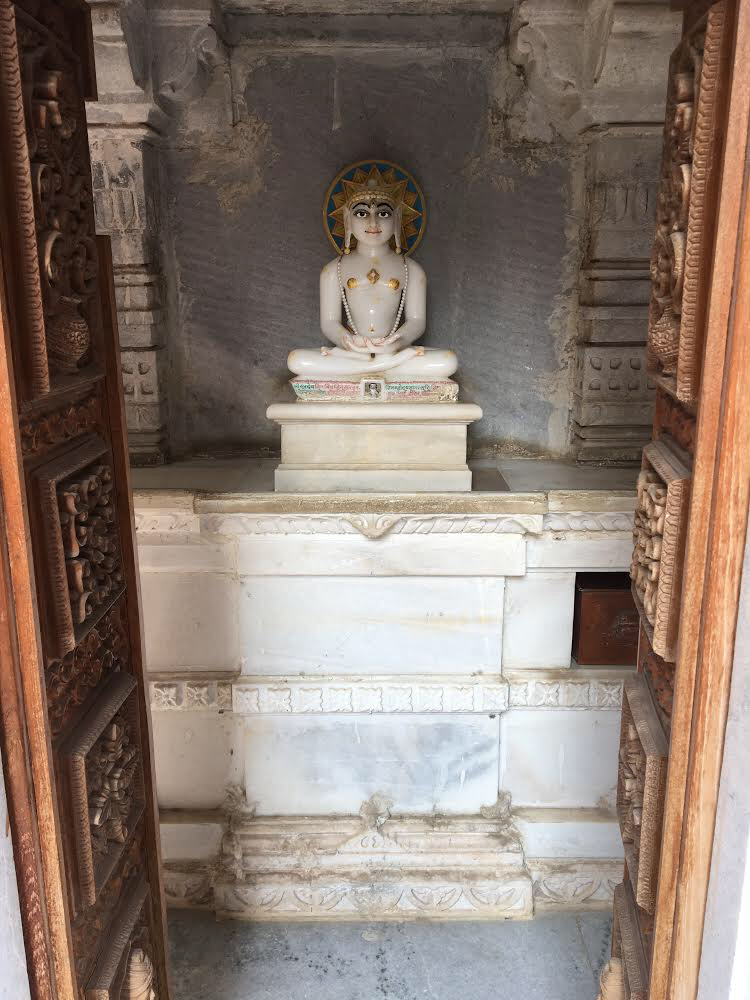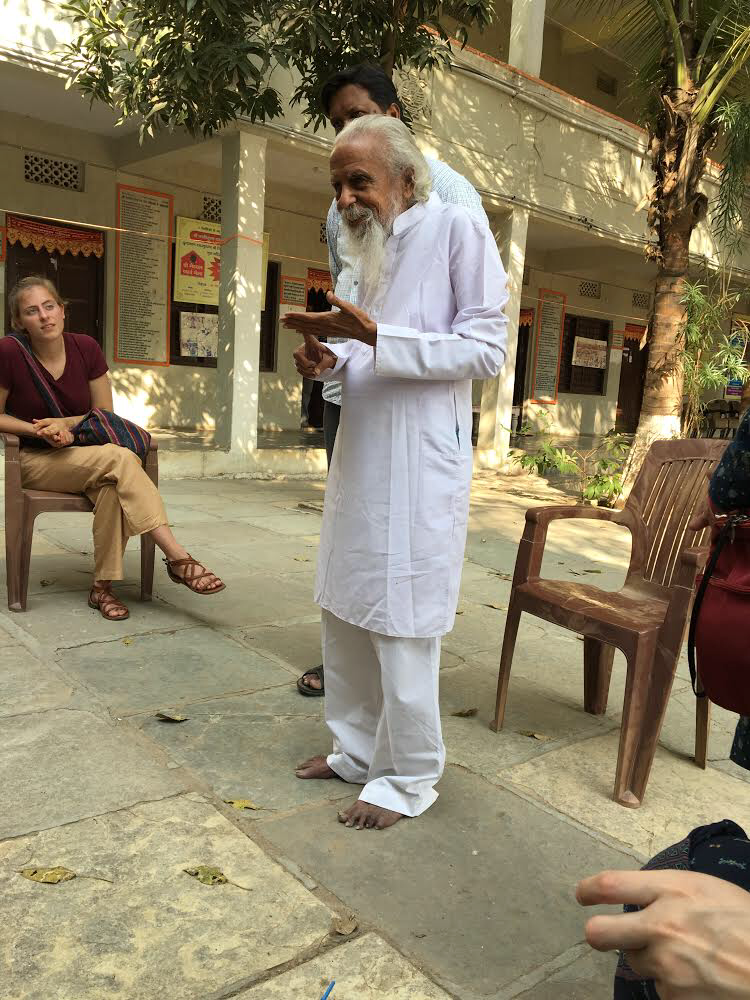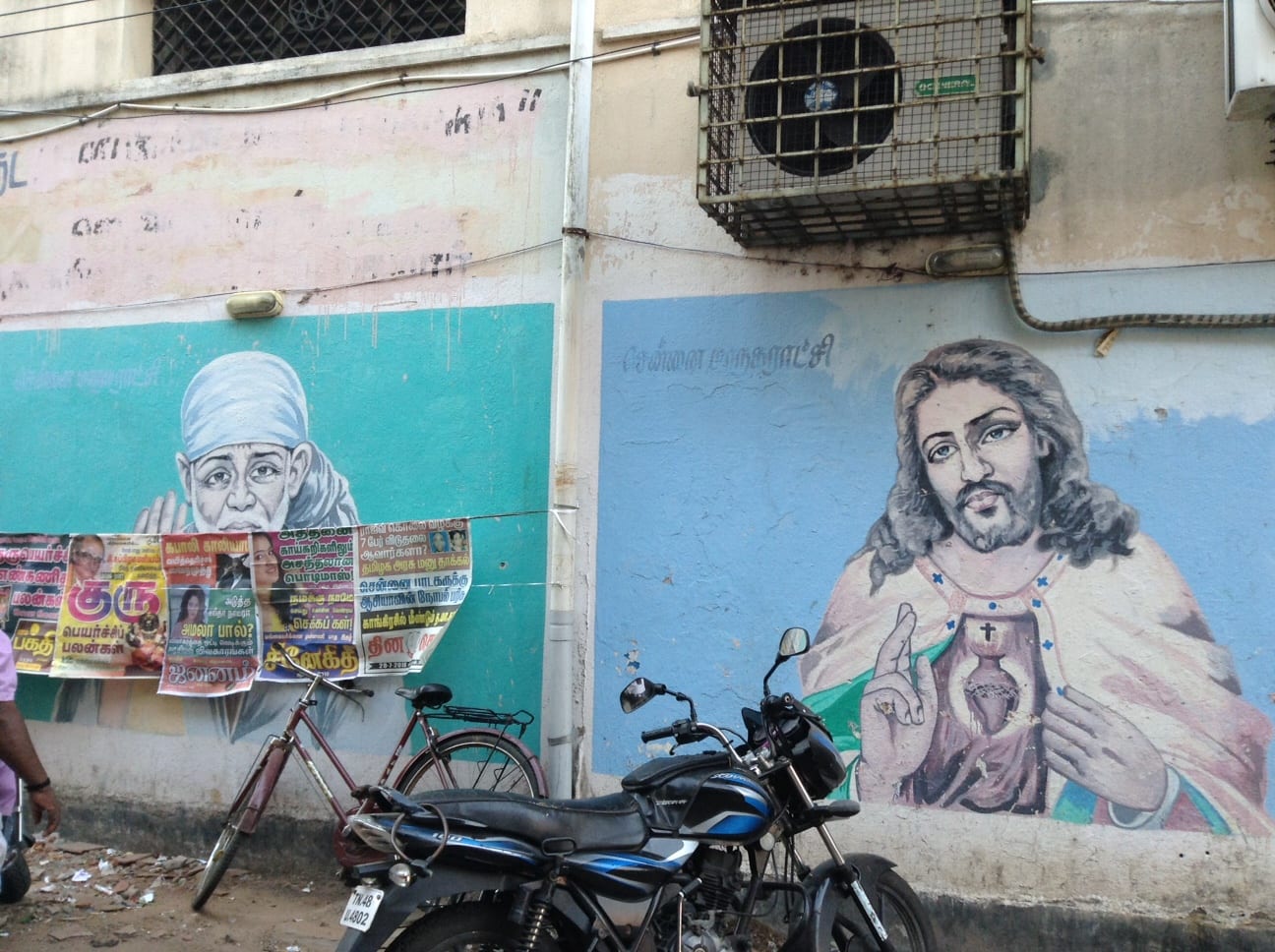Sri Jain Temple Jinalay Medchal
15 January 2019
Iain Carlos

A Jina Murti – one of 72 at the temple.

Our very knowledgeable Jain guide.
The marble of the newly built Jain temple was hot against the soles of my feet. The colored light on Jain founder figures on the ceiling was a cross between the panged faces of confused yet hopeful ascetics and a discotech.
Lessons from Paradox
I was surprised when our long-haired and clothed guide for our visit to the Sri Jain Temple Jinalay Medchal walked onto our tour bus. I was under the impression he would be bald – and I was a little afraid he’d be naked – as that’s what I had read about Jain monks in the area we were headed to. After some time, I realized he wasn’t a monk. He was a lay Jain – one that fit the stereotype of being wealthy. He told us he had many advanced degrees, spent much of his life practicing law, and that it was his contribution of capital that had made the construction of the Sri Jain Temple Jinalay Medchal possible. Following his self-introduction, he proceeded to name and describe each of the 72 Jina (conquerors of the worldly followed by the Jains) statuettes. His excitement in describing each of the Jina was clear, especially when he spoke of ones he felt a personal connection to. At first I thought it was strange that an affluent man should have an affinity for the Jina. Upon further thought however, I realized that the life of renunciation lived by Jain monks and nuns is only possible when supported by those who haven’t left the worldly behind. Temples need to be maintained, and bellies need to be filled. Our guide’s jovial praise of the Jina made more sense after this epiphany. One lesson this teaches us about religion then, it seems, is that religion can be a house of happy paradoxes. Perhaps it is within these paradoxes that religious identity is forged.
